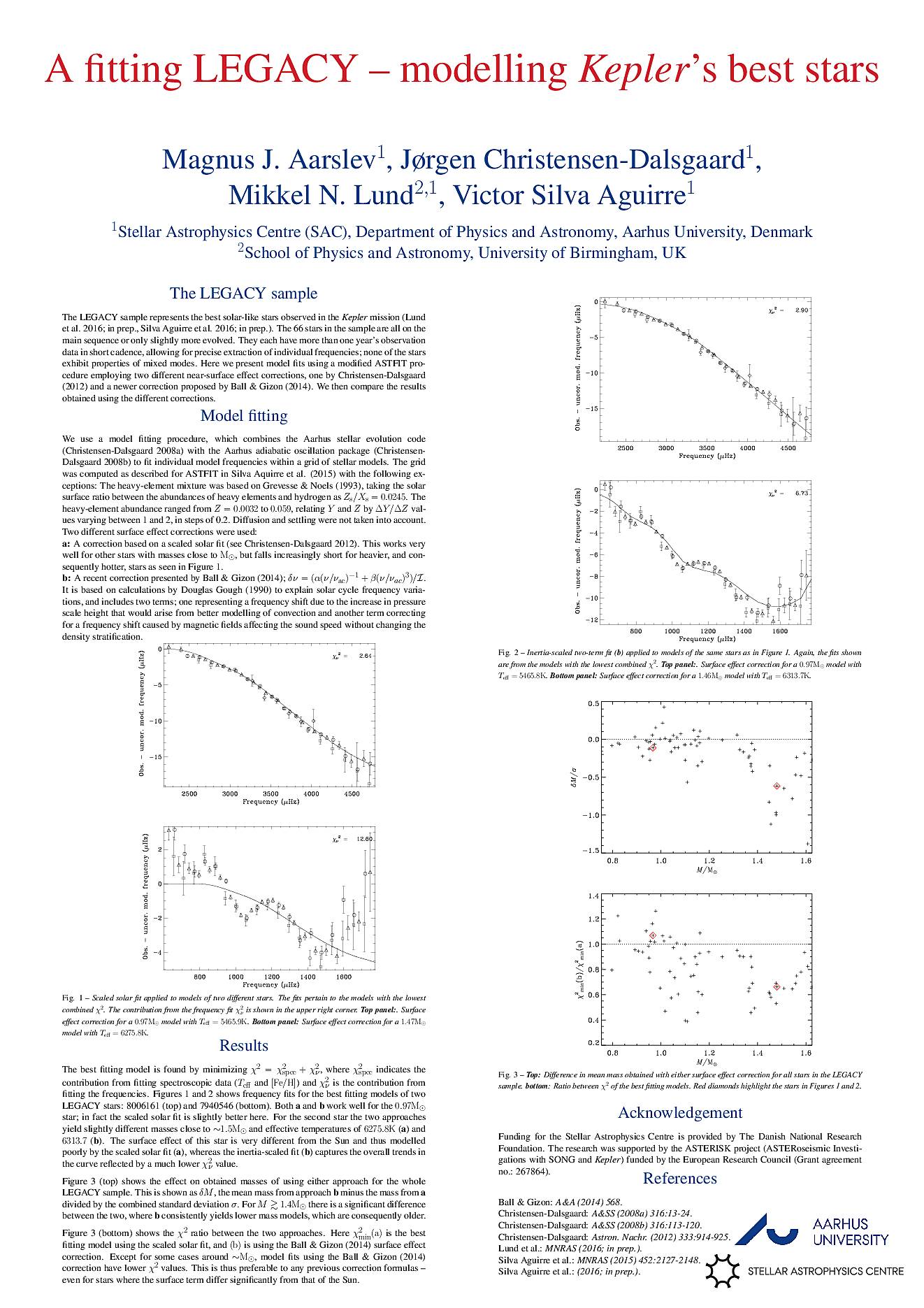Affiliation
Stellar Astrophysics Centre (SAC), Department of Physics and Astronomy, Aarhus University, Denmark
Main category
Natural Sciences (Astrophysics and Astrononmy)
Abstract
The LEGACY sample represents the best solar-like stars observed in the Kepler mission. The 66 stars in the sample are on the main sequence and have more than one year’s data in short cadence, allowing for precise extraction of individual frequencies. We present model fits using the ASTFIT procedure and employing the Ball & Gizon (2014) near-surface effect correction. This correction is based on calculations by Douglas Gough (1990) and includes two terms; one representing a frequency shift corresponding to the increase in pressure scale height that would arise from better modeling of convection and another term correcting for a frequency shift caused by magnetic fields affecting the sound speed without changing the density stratification. Furthermore the correction of each frequency is weighted by the inertia of the corresponding mode. The ASTFIT methods combines the Aarhus stellar evolution code with the Aarhus adiabatic oscillation package to fit individual model frequencies. When combined with the aforementioned correction we produce frequency fits of unprecedented quality – even for stars where the surface term differ significantly from that of the Sun. Our ability to model observations in a precise manner helps constrain the physical parameters of the observed stars as well as pinpoint the aspects of stellar models that still need improvement.
Do you have problems viewing the pdf-file? Download poster
here
If the poster contains inappropriate content, please
report the poster. You will be redirected to the landing page.
